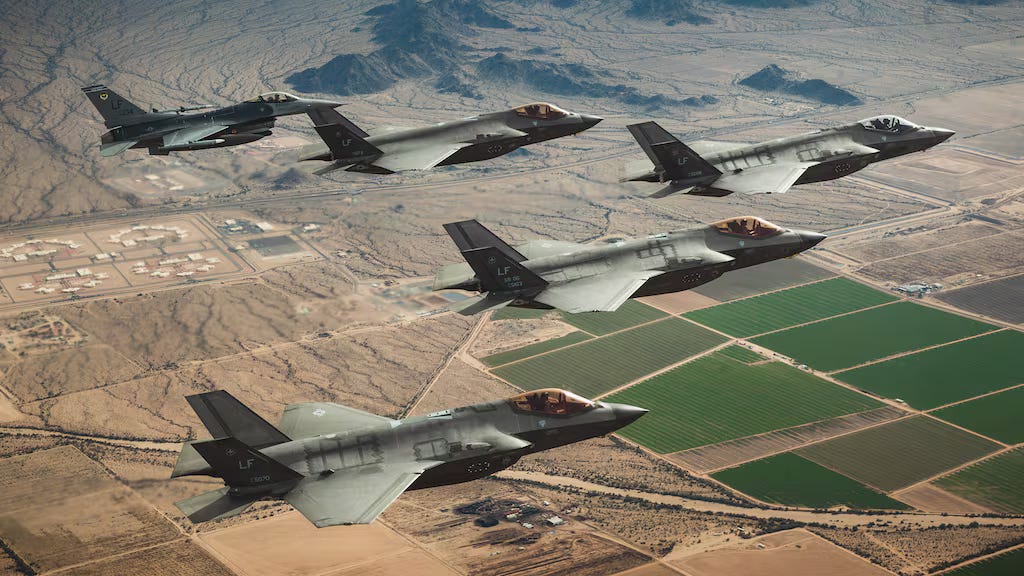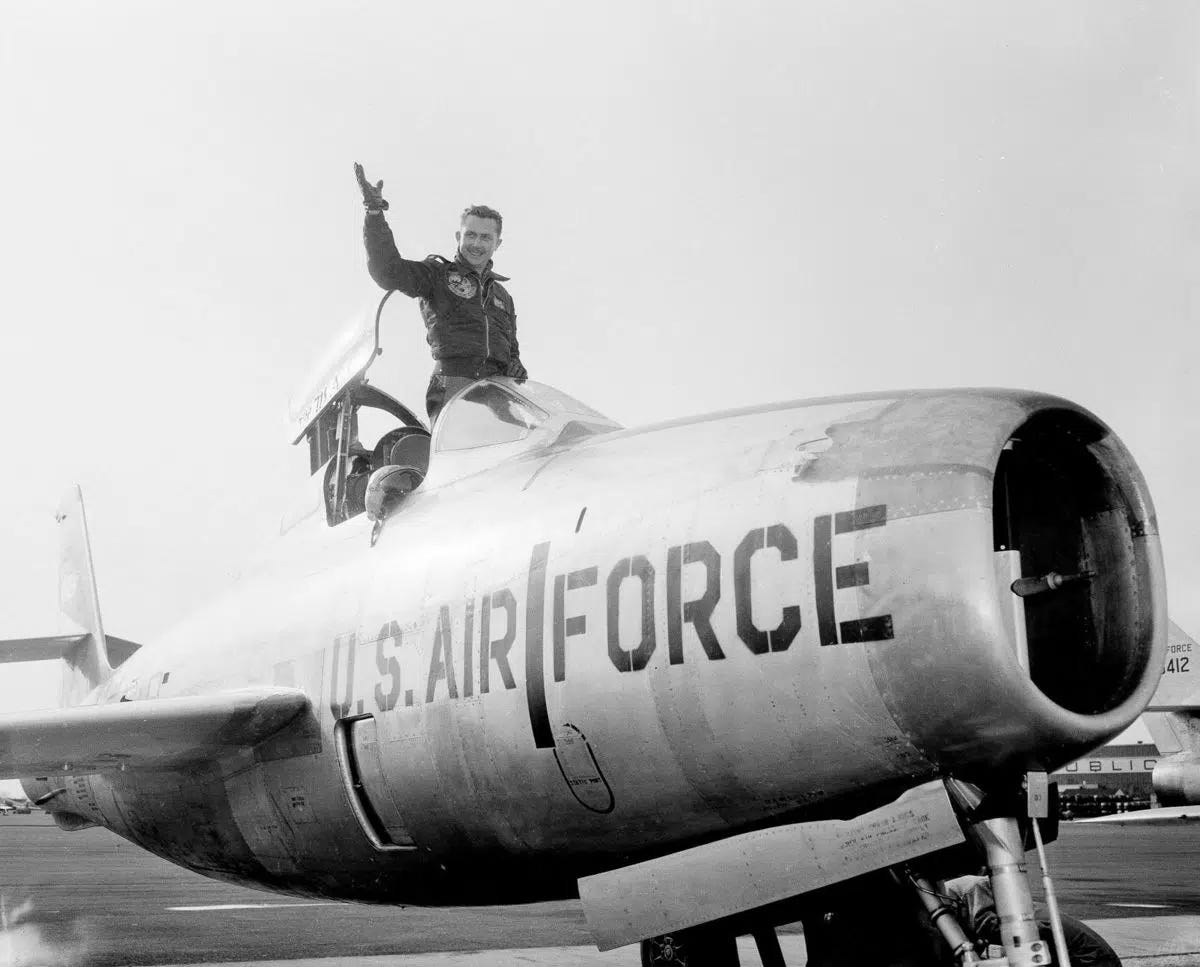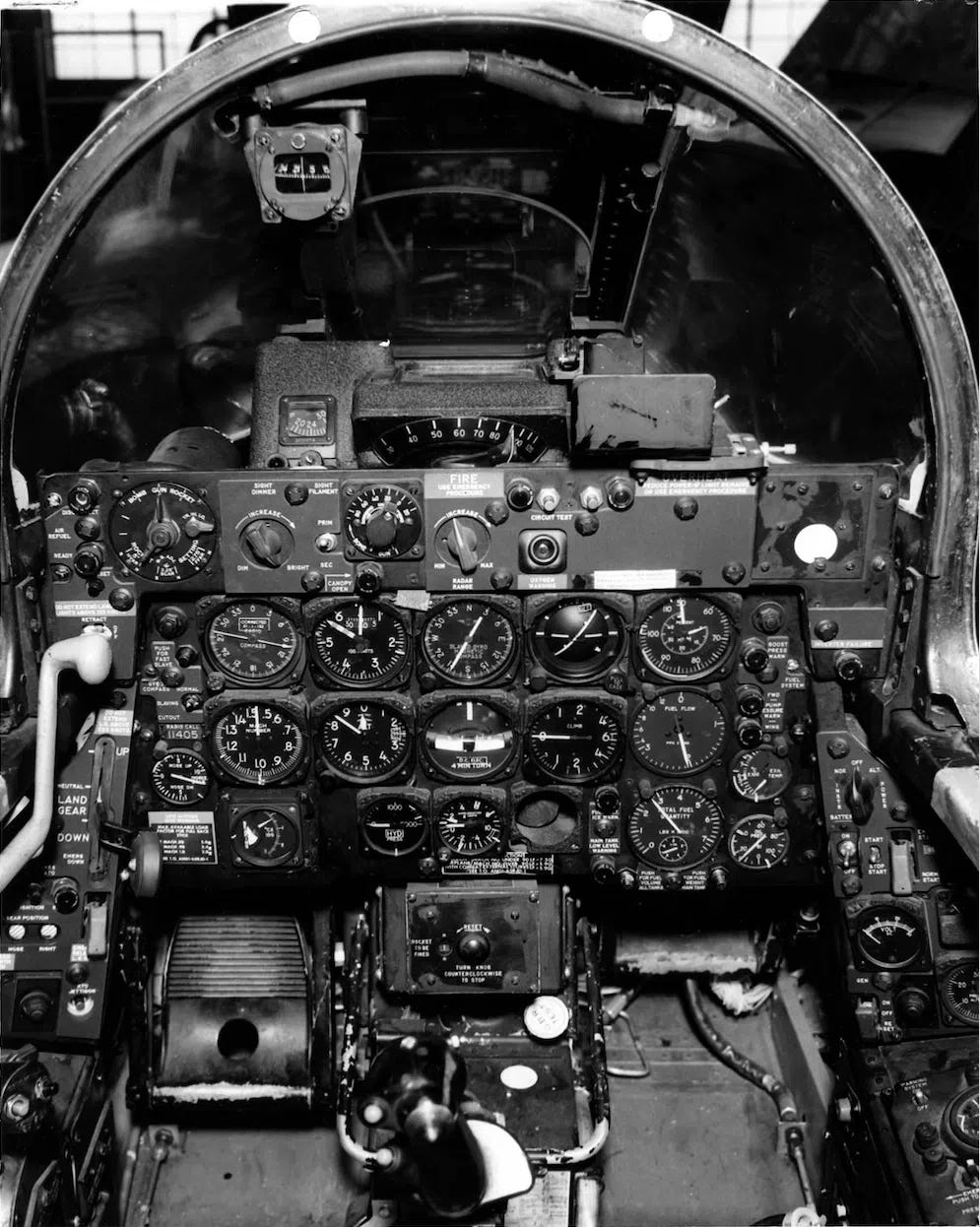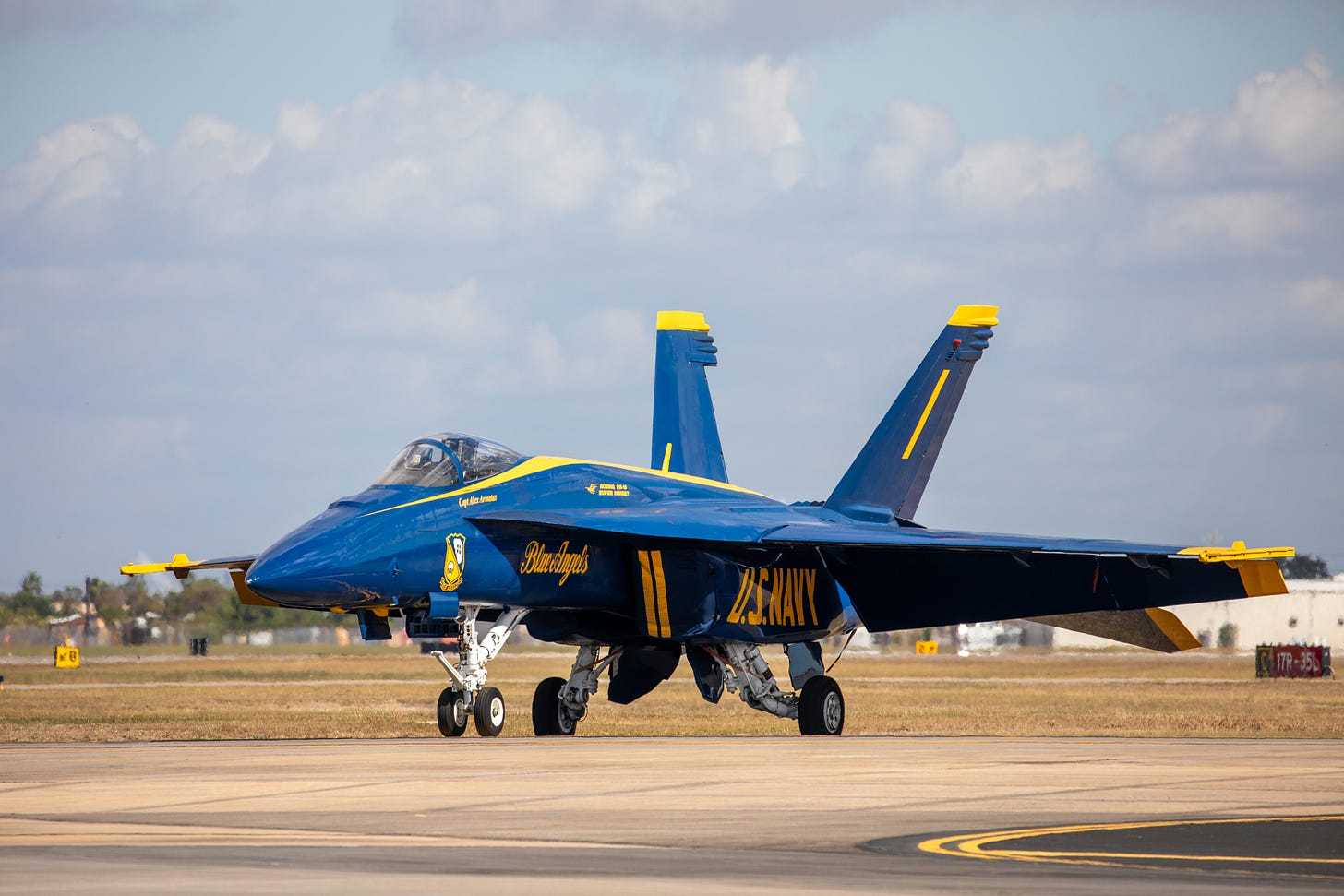Readiness blues and looking back on a record setting Thunderstreak
The USAF's readiness dilemma and remembering a fast F-84
“I wish to have no connection with any ship that does not sail fast; for I intend to go in harms way.”
-Captain John Paul Jones, Continental Navy
Mission Briefing- Mission Readiness at a Crossroads: Air Force Fleet Struggles with Aging Aircraft and Declining Availability
The U.S. Air Force’s fleet-wide mission-capable rate has hit a new low, with only 62% of aircraft able to carry out their missions on an average day in fiscal year 2024. This marks the lowest readiness rate in recent memory, highlighting the increasing challenge of maintaining an aging fleet of more than 5,000 aircraft.
At any given time, approximately 1,900 Air Force aircraft are out of commission, limiting operational flexibility and reducing the service’s overall combat effectiveness. The steady decline in readiness has Air Force leaders sounding the alarm, calling for immediate action to address maintenance, spare parts shortages, and outdated logistics infrastructure.
Aging Aircraft and Readiness Challenges
At the AFA Warfare Symposium in Aurora, Colorado, Air Force Chief of Staff Gen. David Allvin presented a grim picture of fleet readiness. A key statistic underscored the urgency:
🔹 Average aircraft age: 17 years (1994) → 32 years (2024)
🔹 Aircraft availability: 73% (1994) → 54% (2024)
While maintainers work tirelessly to keep planes mission-ready, Allvin warned that the service is “eating into whatever margin we had.”
This drop in readiness is not a new issue. In 2018, then-Secretary of Defense Jim Mattis set an ambitious goal of 80% mission-capable rates for key fighter jets, including the F-16, F-22, and F-35—a target that was never reached. Instead, availability rates have continued to slide, with some of the Air Force’s most advanced and widely used aircraft struggling to stay airborne.
F-35A: A $1.7 Trillion Problem
Among the most concerning cases is the F-35A Lightning II, the cornerstone of the Air Force’s fighter fleet. The F-35A’s mission-capable rate has dropped dramatically:
🔹 69% (2021) → 51.5% (2024)
The Joint Strike Fighter’s declining readiness has led to what the program’s executive officer, Lt. Gen. Michael Schmidt, calls a “war on readiness.” Reports from the Government Accountability Office (GAO) highlight spare parts shortages, training deficiencies, and depot backlogs as major contributors to the problem.
Lockheed Martin has attempted to address these concerns by improving component reliability, but experts warn that without significant investment, the F-35’s readiness may continue to decline.
‘Tired Iron’ – Legacy Aircraft Pushing the Limits
Beyond the F-35, many Air Force aircraft have been in service for decades longer than originally intended. Some of the oldest airframes in the fleet include:
🔹 B-52 Stratofortress – In service since 1961
🔹 C-5 Galaxy – First flew in 1968
🔹 KC-135 Stratotanker – Dating back to the Eisenhower era (1956)
Many of these aircraft require custom-made or salvaged parts, as original manufacturers no longer exist. The B-52H, for example, has seen its mission-capable rate drop from 59% in 2021 to 54% in 2024.
Heather Penney, a former F-16 pilot and senior fellow at the Mitchell Institute, describes this issue as a logistical nightmare:
“It’s spares, maintenance manpower, maintenance experience levels, and depots—which are so behind right now.”
Fleet-Wide Readiness Decline
Readiness rates have dropped across multiple platforms:
A-10 Warthog: 72% (2021) → 67% (2024)
F-16C Fighting Falcon: 72% (2021) → 64% (2024)
CV-22 Osprey: 51% (2021) → 30% (2024)
KC-46 Pegasus: 71% (2021) → 61% (2024)
T-38C Talon: 63% (2021) → 55% (2024)
For some aircraft, such as the CV-22 Osprey, readiness rates have plunged due to mechanical failures, clutch issues, and fatal crashes, resulting in repeated groundings.
The Future of Air Force Readiness
The Air Force has prioritized combat operations over training, concentrating its available aircraft in overseas commands like AFCENT. However, logistical hurdles, environmental challenges, and aging airframes continue to degrade mission availability.
Even with modernization efforts underway—including the procurement of the B-21 Raider, T-7A Red Hawk, and Next Generation Air Dominance (NGAD) program—it will take years before the fleet sees significant improvement.
Gen. David Allvin made it clear at AFA that the Air Force cannot afford to delay action:
“This is a crisis we must address now.”
The question remains—will the funding, resources, and political willpower align in time to reverse this decline?
This Week in Aviation History
9 March 1955 – Breaking the Cross-Country Speed Record
Lieutenant Colonel Robert Ray Scott, commanding officer of the 510th Fighter Bomber Squadron, 405th Fighter Bomber Wing, along with Major Robert C. Ruby and Captain Charles T. Hudson, made history by flying their Republic F-84F Thunderstreaks nonstop from Los Angeles Airport (LAX) to Floyd Bennett Field, New York. The journey required two in-flight refuelings from Boeing KB-29 tankers.
Scott’s flight set a new National Aeronautic Association speed record with a total elapsed time of 3 hours, 44 minutes, and 53.88 seconds—shattering the previous record for the 2,445-mile route.
The High-Speed Dash Across America
A newspaper report the next day highlighted the achievement:
🔹 Lt. Col. Scott finished first with a time of 3 hours, 46 minutes, and 33 seconds, averaging 649 mph.
🔹 Maj. Ruby followed just one minute behind at 3:47:33.
🔹 Capt. Hudson completed the flight in 3:49:53.
Despite setting the Los Angeles–New York record, the Air Force team fell short of the U.S. Navy's existing coast-to-coast speed record. Just a year earlier, Lt. Cmdr. Francis X. Brady had flown a Grumman F9F Cougar from San Diego to New York in 3:45:30, a slightly shorter route.
One key obstacle to an even faster time? Outdated refueling tankers. Scott and his team had to slow from 650 mph to just 200 mph for refueling. Scott refueled twice—over La Junta, Colorado, and Rantoul, Illinois—while Ruby and Hudson, carrying extra fuel tanks, needed just one refueling each.
The mission was part of a mass record attempt involving eight F-84Fs—though only three completed the journey. Others dropped out due to refueling issues, landing safely at various points along the route.
The Man Behind the Record: Lt. Col. Robert Ray Scott
Born in Des Moines, Iowa, on 1 November 1920, Scott developed a passion for aviation early on. After attending the University of Iowa for two years studying aeronautical engineering, he enlisted as an Aviation Cadet in the U.S. Army Air Corps on 15 August 1941.
Commissioned as a Second Lieutenant in March 1942, Scott initially served as a flight instructor before joining the 426th Night Fighter Squadron in the China-Burma-India Theater. Flying the Northrop P-61 Black Widow, he scored two aerial victories, earning both the Distinguished Flying Cross and the Air Medal.
By 1955, Scott had become a highly experienced fighter pilot, and his record-setting flight in the F-84F Thunderstreak cemented his place in aviation history.
In Case You Missed It
What if the Navy got F-117s?
Photo Outlet
Every issue of Hangar Flying with Tog gets you a free image that I’ve taken at airshows:
Feel free to use these photos however you like, if you choose to tag me, I am @pilotphotog on all social platforms. Thanks!
Post Flight Debrief
Want to keep getting this newsletter straight to your inbox? Just sign up using the form below—it's that easy! This newsletter will always be free for everyone, but if you’d like to support the mission and unlock even more, consider becoming a paid subscriber. Either way, I’m grateful for your support. Sign up now and stay in the loop!
-Tog









Why don't you just give the russians more details on our readiness. This is in recredibly irresponsible.